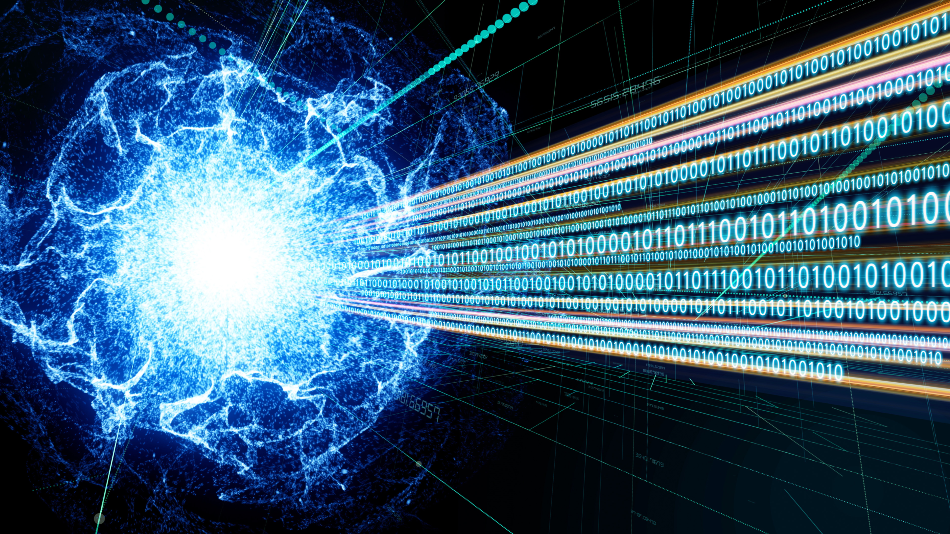Quantum teleportation shows remarkable promise as being critical for the production of semiconductors in the future. The problem lies in trying to understand and transmit information via quantum entanglement. It is also important to remember that quantum teleportation (QT) is not the ‘matter transfer’ teleportation seen in television shows like Star Trek. QT is better thought of as a form of communication; not transportation.

Image Credit: Metamorworks/Shutterstock.com
How could it Work?
Researchers at Google, IBM, and more have been experimenting with QT for a long time, open-sourcing their development tools to increase the chances of consistent success. Semi-conductors tend to be made from materials with an electrical conductivity value falling between that of an insulator and a conductor. Copper and glass are two of the most common materials used in semi-conductors and existing devices already display a range of useful properties including, passing current more easily in one direction than the other, showing variable resistance, and sensitivity to heat and light. But how could semi-conductors be improved?
QT relies on the premise of destroying information at one end (the transmitter) and the receiver assembling duplicate information simultaneously. The energy efficiency alone is enough to excite most researchers, but it is the potential for true end-to-end encryption that will make the most difference to people’s lives. Once established, quantum networks should be safe from online hackers as it is statistically improbable to locate and lifts specific information being transmitted via quantum entanglement.
Lasers and LEDs have already shown a potential route in QT and much progress has been made in generating indistinguishable single photons and entangled photon pairs using regulated streams. Researchers have asserted that it is possible to realize compact, robust LED-like semi-conductor devices for Quantum Light Generation. Optical quantum teleportation is already at the heart of quantum communication technology development. The ultimate challenge is the exploitation of deterministic quantum light sources in push-button quantum teleportation schemes. But it is one researchers have already tested.
In 2010, Fabrizio Buscemi, Paolo Bordone, and Andrea Bertoni proposed a semiconductor device suitable for deterministic quantum teleportation of electrons trapped in the minimal of surface acoustic waves. In 2018, a team of researchers from Austria, Italy, and Sweden demonstrated QT using on-demand photons from quantum dots. The challenge lies in amplifying the quantum signals enough for a receiver to identify and assemble the information correctly. A suggested way around has been to generate photons on-demand as part of a quantum repeater device enabling better handling of the high-speed clock rates quantum devices (like a computer) require. If successful, this method would make modern-day computing as antiquated as a typewriter.
The Role of Quantum Dots in QT
Quantum dots are man-made nanoscale crystals that can transport electrons – hence their application in QT development. Researchers created highly symmetrical quantum dots, utilizing an etching method to manufacture the hold pairs where the dots develop. The process is called a XX (biexciton) X (exciton) cascade. They then began a dual-pulsed excitation scheme to settle the desired XX state. After 2 pairs shed photons, they retained their entanglement – which is critical to success. This method allowed researchers to create on-demand single photons suitable for use in teleportation. This method is still in the experimental stage and the consistent implementation of the process is expected to take several more years before it can be applied
QT will help create advanced and more efficient semiconductors in the future. The quantum dots created by the teams in Austria, Italy, and Sweden demonstrate a visible advance in QT. But these are not the only experiments taking place. Additional work undertaken by researchers from the University of Science & Technology in China and Vienna has shown it is possible to transmit a 3D entangled state from one transmitter to another. They did this by making a 3rd photon interfere with the transmitter’s half of the entangled pair and performed a state measurement on all 3 photons. This allowed them to transfer the 3D state to the photon held by the receiver. This 3rd state is called a Qtrit and unlike a Qbit, carries more information. This could prove invaluable for future high-speed quantum communications.
The future is looking bright and definitely quantum.
Sources
Photon entanglement generation and teleportation using semiconductor quantum dots (Conference Presentation) – Spie Digital Library - 2019
https://www.spiedigitallibrary.org/conference-proceedings-of-spie/11091/1109117/Photon-entanglement-generation-and-teleportation-using-semiconductor-quantum-dots-Conference/10.1117/12.2531744.short?SSO=1
Synopsis: Quantum Teleportation Now Comes in 3D – Physics.APS - 2019
https://physics.aps.org/synopsis-for/10.1103/PhysRevLett.123.070505
Is quantum teleportation an option for future semi-conductors? – AZO Quantum - 2019
https://www.azoquantum.com/Article.aspx?ArticleID=139
Researchers demonstrate teleportation using on-demand photons from quantum dots – Phys Org - 2018
https://phys.org/news/2018-12-teleportation-on-demand-photons-quantum-dots.html
All-photonic quantum teleportation using on-demand solid-state quantum emitters – Science Advances - 2018
https://advances.sciencemag.org/content/4/12/eaau1255
Quantum teleportation of electrons in quantum wires with surface acoustic waves – APS Physics - 2010
https://journals.aps.org/prb/abstract/10.1103/PhysRevB.81.045312
Semiconductor quantum light sources – Andrew J. Shields - 2009
https://www.worldscientific.com/doi/abs/10.1142/9789814287005_0023
Disclaimer: The views expressed here are those of the author expressed in their private capacity and do not necessarily represent the views of AZoM.com Limited T/A AZoNetwork the owner and operator of this website. This disclaimer forms part of the Terms and conditions of use of this website.